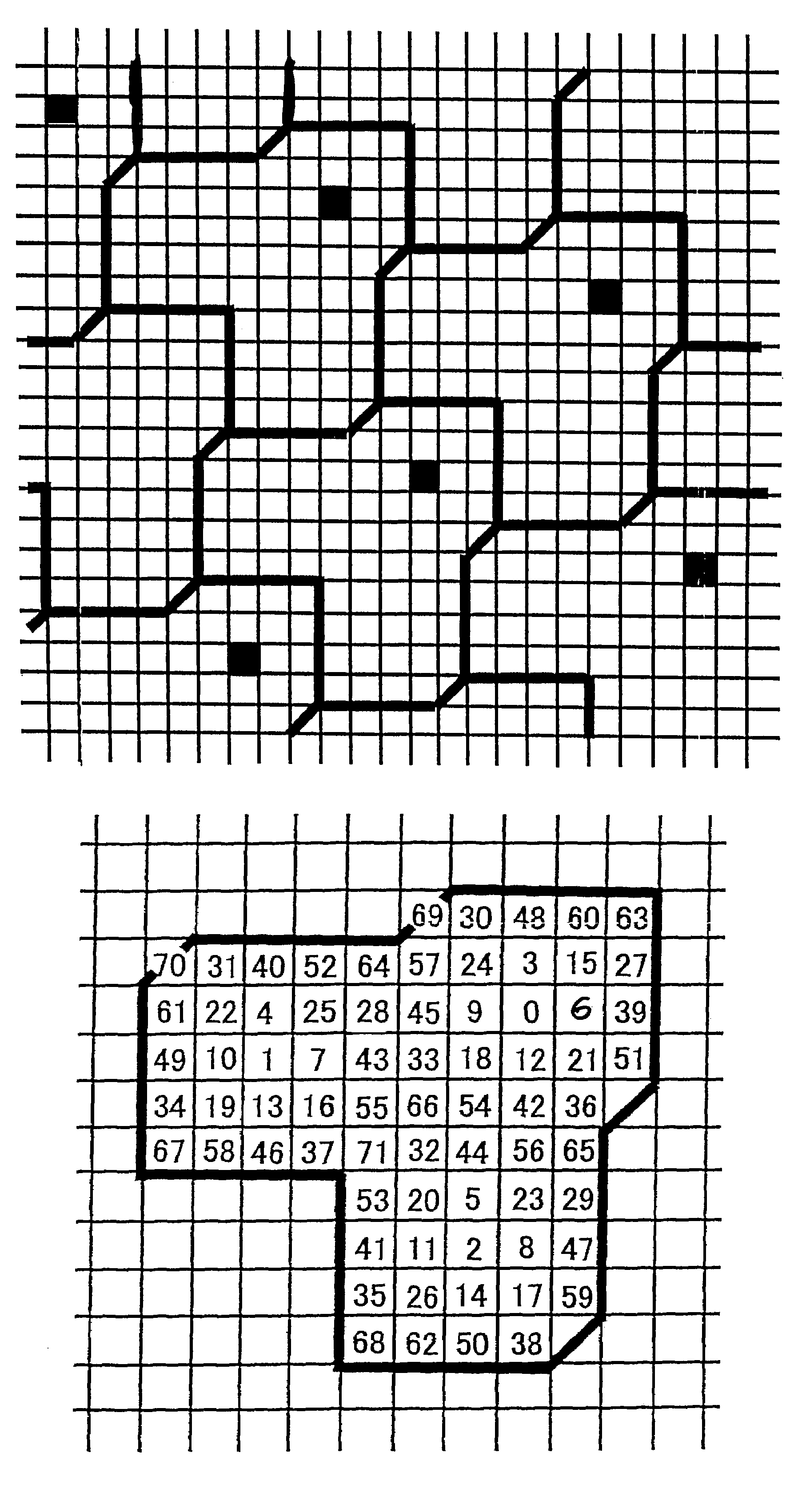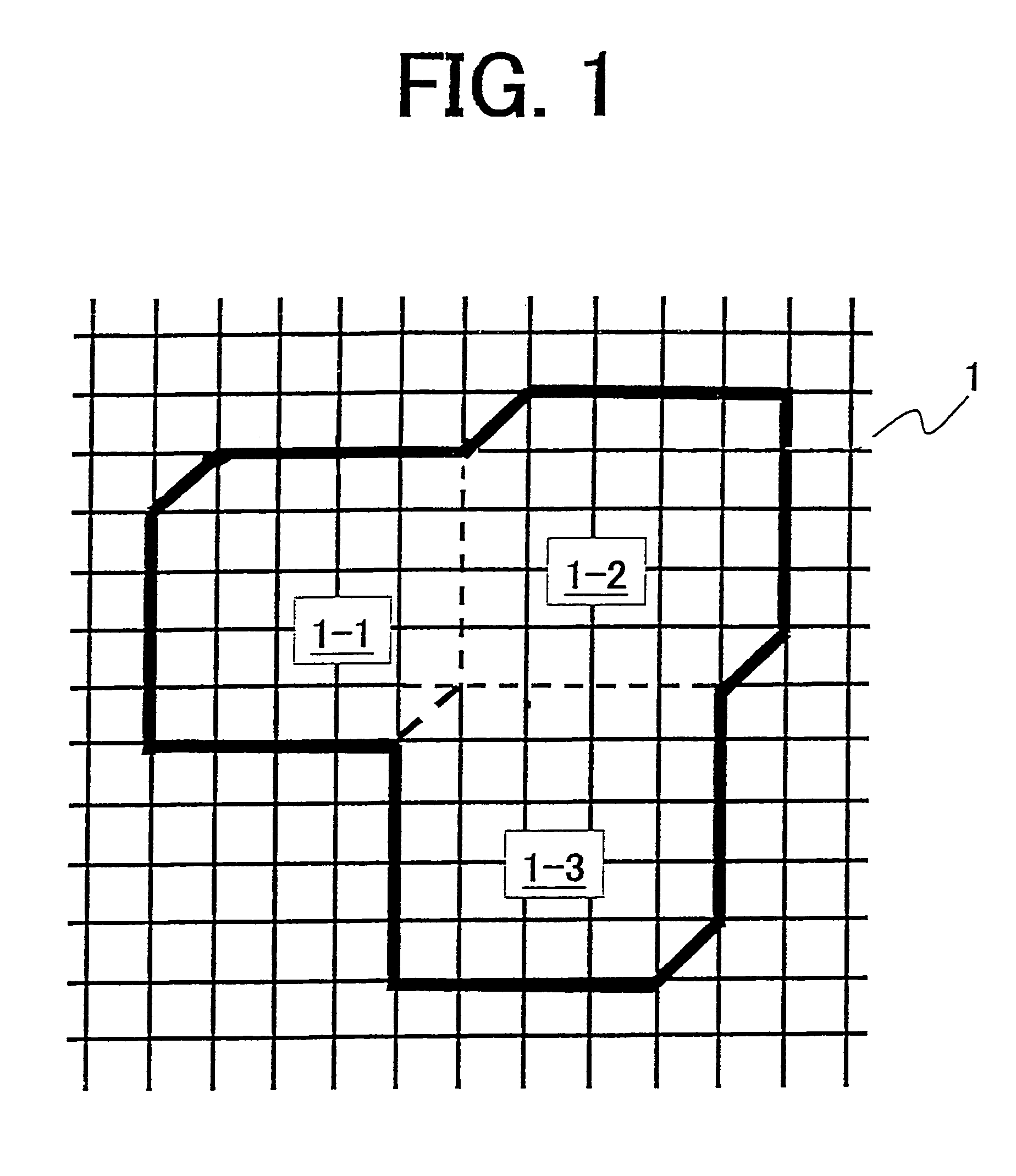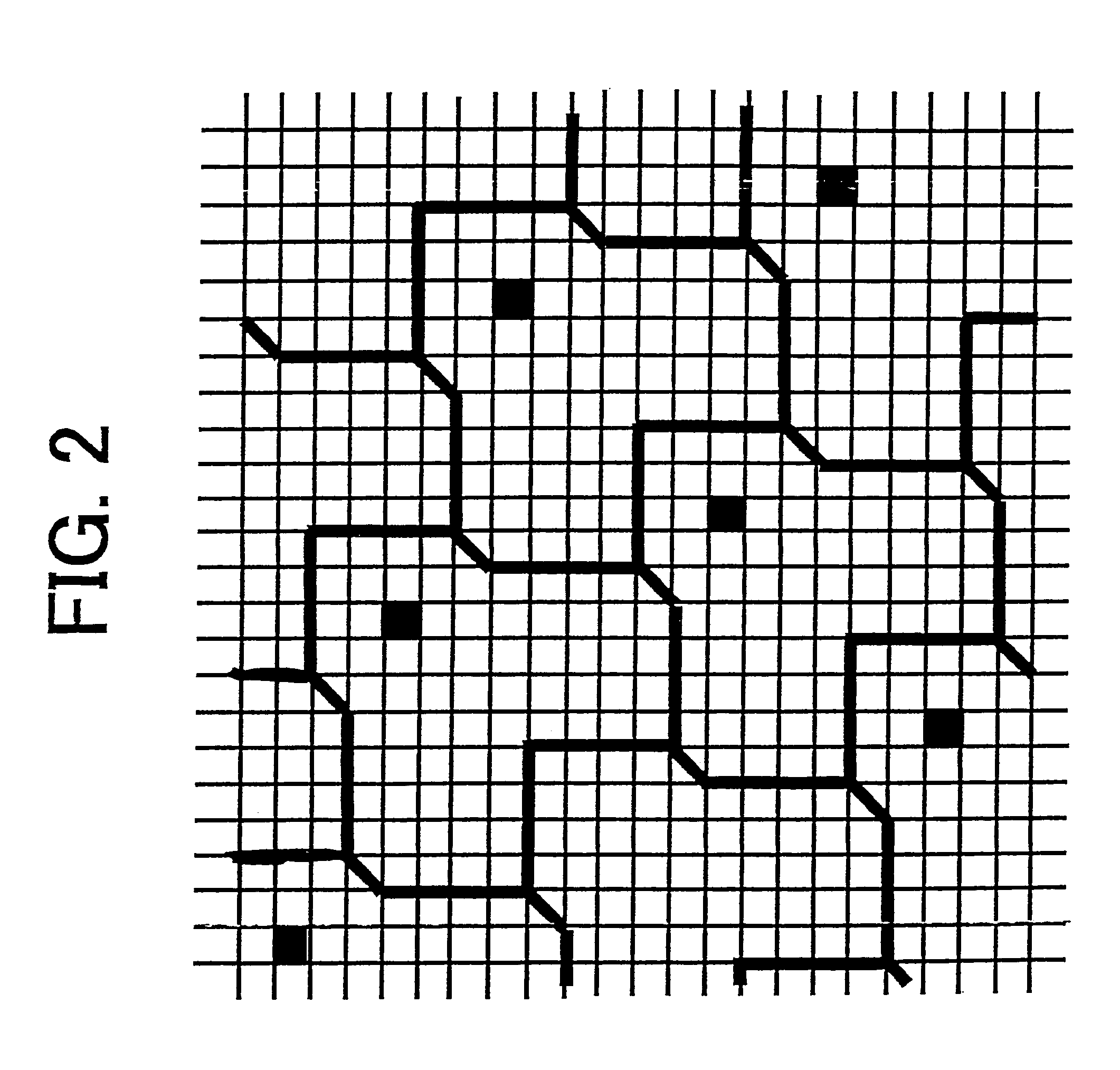Screening method and a screening apparatus
a screening method and screening apparatus technology, applied in the field of screening methods and screening apparatuses, can solve the problems of no advantageous functional effect of improving screening methods and the quality of output images may become further rough
- Summary
- Abstract
- Description
- Claims
- Application Information
AI Technical Summary
Benefits of technology
Problems solved by technology
Method used
Image
Examples
first embodiment
[0053]A first embodiment of the present invention is described below. FIG. 1 is an explanatory diagram illustrating halftone cells in the first embodiment of the screening method according to the present invention. FIG. 2 is an explanatory diagram illustrating the state of arranging the halftone cells as shown in FIG. 1 on a square grid. FIG. 3 is an explanatory diagram illustrating threshold values to be respectively set in the halftone cells in FIG. 1.
[0054]At first, as shown in FIG. 1, a couple of corners opposing each other of the 5×5 square cell are both removed (i.e., cut off) therefrom in order to obtain two sides (i.e., the slanted sides), and thereby hexagonal cells 1-1, 1-2, and 1-3 each having 24 (=5×5−1×1) pixels can be formed. The three hexagonal cells 1-1, 1-2, and 1-3 thus formed are combined into one cell which forms halftone cell 1. Consequently, the number of the halftones capable of being expressed by the halftone cell 1 turns out to be 24×3=72. Moreover, since th...
second embodiment
[0060]FIG. 4 is an explanatory diagram illustrating a first halftone expressing method utilizing a sub-matrix of the first embodiment in relation to the screening method according to the present invention, and FIG. 5 is an explanatory diagram for illustrating auxiliary points in the sub-matrix as illustrated in FIG. 4.
[0061]Here, as described in the above “Discussion of the Background” section, paying attention to the dots employed for image-drawing the circumferential part of the rectangular area parallel with the direction of the x-axis, the distance between the dots becomes large because of the sharp-angle dots arrangement.
[0062]For this reason, a phenomenon of blanking on an area where the dots distance becomes wide may occur. Furthermore, since the dots situated on the places neighboring the line connecting the other dots are not symmetrical to each other from the center between the other dots, if the dot is caused to grow as it is, a phenomenon of swelling may occur, and that ...
third embodiment
[0067]On the other hand, as a second method of expressing a halftone as shown in FIG. 6, if the auxiliary dot is caused to grow by treating the dot in the same way as that of the essential dot, the number of lines can be increased without decreasing the number of the halftones. However, on this occasion, since the distance between the dots decreases, the combining due to the dot gain tends to easily occur.
[0068]The first and second methods of expressing the halftone are described above. However, it may be preferable to adopt either one of the above two methods in accordance with the shape and size of the sub-matrices.
[0069]Here, it is not necessary that all of the sub-matrices in the hexagonal cell are of the same shape. Furthermore, it is also not necessary that all of the above sub-matrices are hexagonal.
PUM
 Login to View More
Login to View More Abstract
Description
Claims
Application Information
 Login to View More
Login to View More - R&D
- Intellectual Property
- Life Sciences
- Materials
- Tech Scout
- Unparalleled Data Quality
- Higher Quality Content
- 60% Fewer Hallucinations
Browse by: Latest US Patents, China's latest patents, Technical Efficacy Thesaurus, Application Domain, Technology Topic, Popular Technical Reports.
© 2025 PatSnap. All rights reserved.Legal|Privacy policy|Modern Slavery Act Transparency Statement|Sitemap|About US| Contact US: help@patsnap.com



